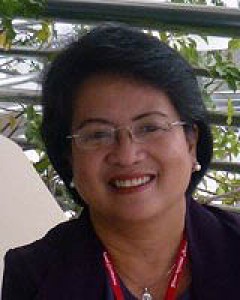early abstract:
Objective: Hundreds of millions of people worldwide lack access to quality health services, largely because of geographic and socio-economic maldistribution of qualified practitioners. This study describes differences between the practice locations of Philippines medical graduates from two 'socially-accountable, community-engaged' health professional education (SAHPE) schools versus the practice locations of graduates from two 'conventionally-trained' medical schools located in the same respective geographic regions.
Participants: Licensed medical graduates whom are currently practising in the Philippines and have been practising for at least 6 months. Graduates were from two Philippines SAHPE schools (Ateneo de Zamboanga University-School of Medicine (ADZU-SOM) on the Zamboanga Peninsula (n=212) and the University of the Philippines Manila-School of Health Sciences (SHS-Palo) in Eastern Visayas (n=71), and from two 'conventional' medical schools (n=136 and n=73) in the same respective geographic regions (Mindanao and the Visayas).
Design: Current graduate practice locations in municipalities or cities were linked with their respective population size and socio-economic income class, and geo-coded using Geographical Information System software onto a geospatial map of the Philippines. Bivariate analysis compared the population size and socio-economic class of communities where the SAHPE medical graduates practised to communities where 'conventional' medical school graduates practised.
Results: Thirty-one percent of ADZU-SOM medical graduates practised in communities <100,000 population versus 7% of graduates from the conventional school in the Zamboanga region (p<0.001), while 61% of SHS-Palo medical graduates practised in communities <100,000 population versus 12% of graduates from the conventional school in the Visayas region (p<0.001). Twenty-seven percent of ADZU-SOM graduates practised in lower income category communities (category 2-6) versus 8% of graduates from the conventional school in the same region (p<0.001), while 49% of SHS-Palo graduates practised in lower income category communities (category 2-6) versus 11% of graduates from the conventional school in the same region (p<0.001). Using a comparative number of graduates, more ADZU-SOM graduates practise in municipalities across non-metropolitan areas of the Zamboanga Peninsula region than from conventional school A across non-metropolitan areas of Mindanao (23% versus 12%), and more SHS-Palo graduates practise in municipalities across non-metropolitan areas in the Visayas region than from conventional school B (19% versus 5%).
Conclusions: Socially-accountable, community-engaged health professional education (SAHPE) has contributed to increased medical coverage across rural and/or economically disadvantaged areas in two Philippines regions. The extensive community-based medical student placements associated with SAHPE likely plays a significant role in graduates choosing to practice in rural and/or economically disadvantaged communities. Governments experiencing similar medical workforce mal-distributions as the Philippines should consider SAHPE as a potentially cost-effective strategy in recruiting and retaining health graduates to under-served areas.





